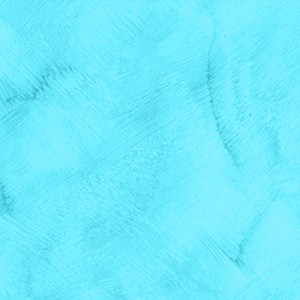Bare wooden floorboards are gently color-washed with thin transparent layers of diluted emulsion paint, which seep into the wood, allowing the grain and texture to show.
Color washing is a simple technique to use on bare wood and the effect can be as light or as heavy as you wish -just add more or less water to the mixture. Ready-mixed wood stains can also be used for this effect and these tend to sink more deeply into the grain of the wood.
A particular advantage of emulsion paint is that, unlike wood stain, there are hundreds of colors to choose from. It is also possible to blend in thicker versions of the emulsion wash to cover certain areas more paquely, and so disguise knotting or any repairs in the wood.

To add a simple pattern to a floor as shown here, simply mask off square shapes of various sizes on the color-washed base and wash over a second time in another color. The base color affects the color of the second wash and shows through a little underneath, so for this reason it is easier to paint a darker color on top of a lighter base.
You can, of course, use any shape or pattern either across the floor as I have, or as a border. Diluted emulsion paint dries very quickly, so if you are color washing your floor on a warm summer’s weekend with the windows open, you will probably have it finished with plenty of time to spare.
Day One
- Wet the wood and lightly sand it with finishing (fine) sandpaper. This will prevent the grain from raising when the wash is applied.
- Seal any knots in the wood with knotting solution. This is necessary on new wood that has not completely dried out. For pale wood use white knotting, which is transparent. The knotted areas will not accept the wash as well as the bare wood will, so be careful to apply the knotting only on the knot. Do this by dabbing some knotting solution onto a rag and rubbing it well into the knots. This will be dry very quickly.
- Prepare the color wash mixture in a bucket. Pour the emulsion paint into a bucket and slowly add water until it is a thin milky consistency. The more water you add, the more transparent the wash will become. Test the color first on a scrap of wood.
- Using a large decorators’ brush, apply the mixture to the wood with a generous sweeping motion in the direction of the wood grain. Work along the floorboards making sure you do not let an edge dry in the middle of a board. As the paint is diluted it should dry very quickly.
- Use paper cut-outs to lay the pattern out on the floor and decide on the design. I used lining paper to do this.
Day Two
- Draw round the paper squares with chalk that can be wiped off easily afterwards.
- Using low-tack masking tape, mask off the square sections neatly and precisely. Make sure the edge is smooth so that paint cannot run underneath.
- Brush on the second color. Make sure you brush away from, not towards, the tape – this will create as neat an edge-as possible. Carefully remove the low-tack tape.
- Use a damp cloth to wipe off any paint that has seeped through the masking tape. Do this before the paint dries.
- Wipe off the remaining chalk marks with a damp cloth.
- Allow the paint to dry completely, then varnish the floor with two coats of acrylic floor coating.